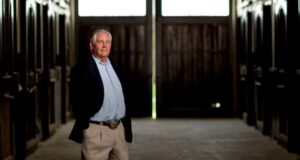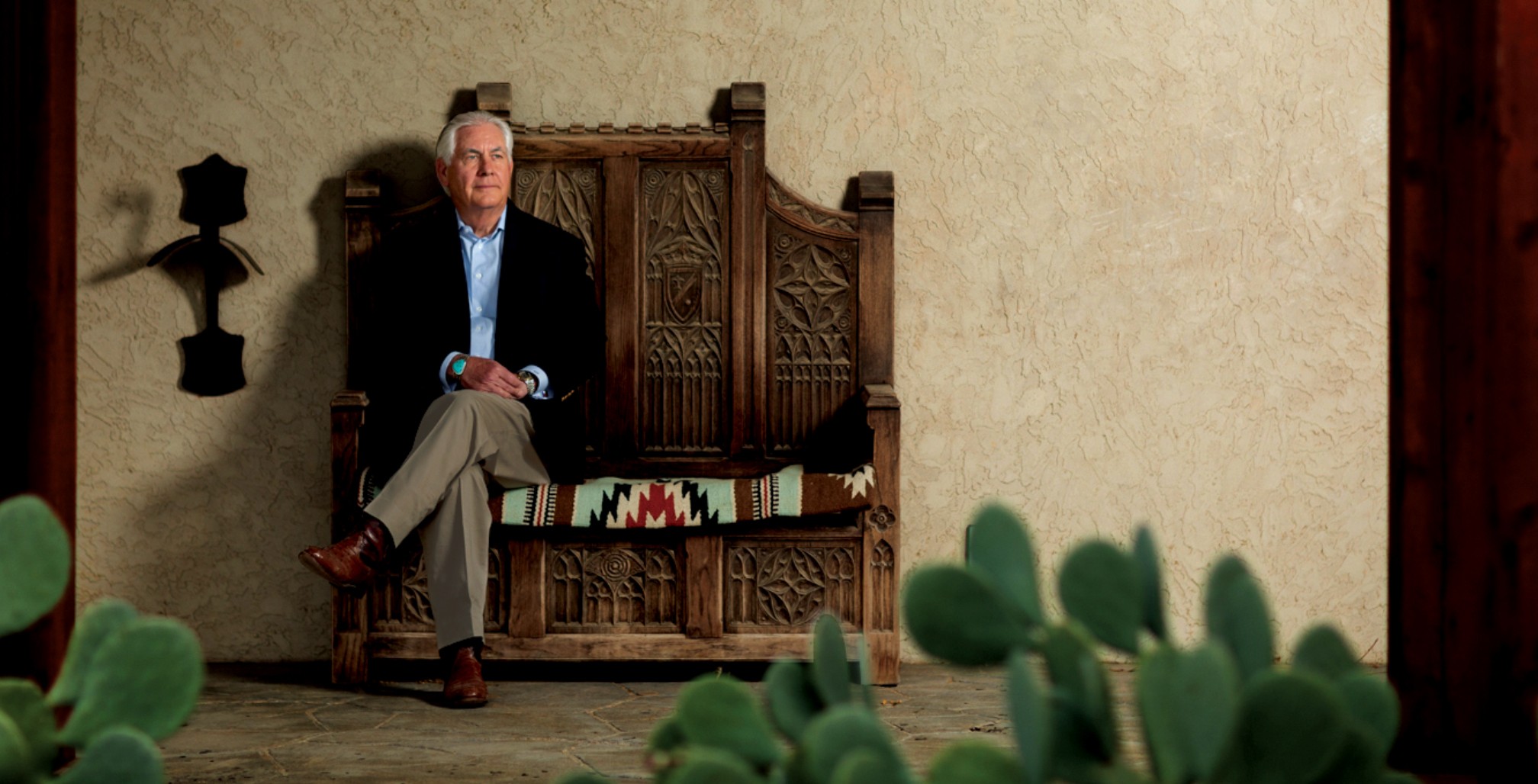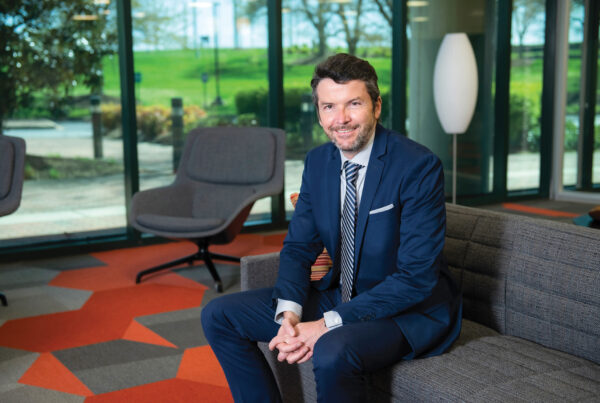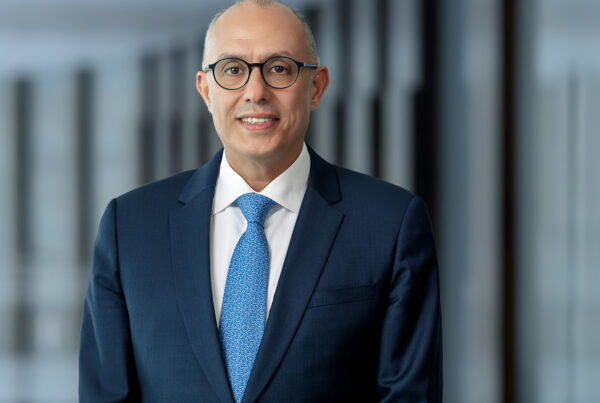Rex Tillerson is a recognized master of leading through uncertainty and change.
In an exclusive interview with Insigniam founding partner Nathan Rosenberg and the IQ team, Mr. Tillerson addresses the challenges of leading during black swan events, those outlier threats like the current pandemic that land with extreme impact. They may be unexpected, but that does not mean organizations  should not have a strategic vision on how to deal with them.
should not have a strategic vision on how to deal with them.
He also offers his thoughts on navigating complex mergers and acquisitions, and why trust and relationships—even if they are maintained on screens in the era of COVID-19—matter more than ever in business. Here, Mr. Tillerson offers his hard-won insights on some of the biggest issues facing leaders right now:
Leading Through Black Swan Events
Coronavirus is disrupting supply chains and business across the globe. There seems to be more unrest in the world and problems popping up all the time. How can business leaders maintain fidelity to a long-term vision and respond to emerging events strate – gically rather than reactively?
Black swan events, in and of themselves, demand a certain tactical and execution response. And the way you prepare for those is you already have a response team or response organization so when that happens you don’t have to form them. Everybody knows immediately our job is to deal with this black swan event. Now, let’s get after it, and you don’t lose days or weeks, or in some cases I’ve seen organizations lose months while they were floundering around trying to figure out even how to organize themselves to deal with it. It’s really a crucial part of how you structure a robust strategic planning process.
You have strategies and then you have tactics that allow you to implement those strategies. Then you have execution plans. At every one of those levels, part of the development of those strategies has to be to identify the risks. What are the things that could happen that I can’t predict and I wouldn’t have any warning that it’s going to happen? Are the strategies resilient? Are they still going to be appropriate?
Then it drops down to what are my tactics for dealing with that. Here are a set of tactics and now if I decide I have to implement those tactics, what’s the execution plan? That’s a very detailed, written-out plan with people’s names. Who has responsibility for what so when that day comes, you’re not having to develop that on the fly. It doesn’t mean that you can fill in all the blanks.
Predicting the Unpredictable
When something like coronavirus envelopes the globe, that changes everything. We had been seeing increased geopolitical instability over the last several years, but this is something entirely different.
During my career, we always had pandemics as one of our unpredictable events and how it would affect our ability to operate. What kind of threats would it present to the viability of the business? So we already had plans developed for how we would deal with a pandemic. Those then are driven down through the organization to an appropriate level so that everyone, all the way down to country managers, knew what the corporate plan was—but they had to then develop their location-specific response to that so they were ready.
Obviously, that’s different if you’re managing a country in West Africa versus managing Canada. With this novel coronavirus, the threat to someone in one part of the world could be significantly greater than a part of your operation in another part of the world. Part of our viability plans were: Could we isolate that operation in that part of the world? If we had to shut everything down for a while would it be OK? And if we couldn’t, then how were we going to prop that organization up if they became disabled by the event? How were we going to protect the shareholder interest and protect the assets and the people?
It all ties back to the viability of your fundamental strategies. Your strategies don’t change very much or very often unless you have some kind of an event like a breakthrough technology that just completely changes the nature of your business model and you have to respond to that. But by and large, your strategy is longer-term looking. They’re how you align the entire organization Click To Tweet.
Everybody knows this is what we’re trying to do over the long term. Now here’s the way we want to do it. Here are our tactics, and everyone then translates that down to their operating level and their location and factors locally that they’re having to manage. Everybody’s geopolitical factors will be different in the countries they’re operating in.
The Difference Between Success and Failure
You have experienced both successes and, at times, failures. What have you noticed about the throughlines of each batch of experiences? What are the commonalities you take away and apply to future endeavors?
Reflecting back on my own experiences of when something worked—and when it wasn’t successful, why did it fail—it ultimately boiled down to the relationships within the organization or within the work team or whatever level you were trying to affect.
When it failed, it was generally because people weren’t committed to each other. We always like to say they “just weren’t committed to the change.” But having gone through a number of periods where we had to do this, I attributed our failures more to the lack of the cohesiveness of individuals and their commitment to one another and not so much to the fact that maybe they said I don’t like this change and I’m not going to do it.
When people are committed to one another, then they tend to take on whatever challenge is put in front of them and they succeed.
The Not-So-Secret Ingredient Behind Successful M&As
Can you talk about leaving the world of mergers and acquisitions? When you were a young man you played a critical role in bringing two huge companies, Exxon and Mobil, together. I know that there were other acquisitions that you made while you were CEO. How did you lead acquisitions and bring companies and culture together, not just the financial side but the culture side, the people side, the customer side?
When I was CEO, I never was interested in just buying somebody’s assets and tossing their people aside. There are others who did that and they weren’t particularly successful.
So when we would evaluate M&A opportunities, we would do a lot of research and try to understand the organization that we were going to get married to. What was their culture, what were their values? How strong were their internal mechanisms for enforcing their values?
 In the case of the Exxon and Mobil merger, it really was a marriage where the fundamental values were very similar. They were almost the same. The only differences that existed were Exxon was big and more disciplined in what we demanded of people than Mobil was. It took two or three years after the merger for us to be able to explain to our Mobil counterparts why we did things the way we did.
In the case of the Exxon and Mobil merger, it really was a marriage where the fundamental values were very similar. They were almost the same. The only differences that existed were Exxon was big and more disciplined in what we demanded of people than Mobil was. It took two or three years after the merger for us to be able to explain to our Mobil counterparts why we did things the way we did.
When it was all over, we would look back every year on how the organization was understanding this. Mobil’s senior people got it first, which was kind of interesting. I would have thought they would find it the most difficult. They saw the value of everyone having tremendous clarity around what our rules and our norms were. Tremendous clarity around how they as an individual were going to be assessed, how they were going to be developed, how they were going to be judged performance-wise. They had tremendous clarity around what happens when you step across the line. They saw the value of that in bringing the organization closer together.
Most people thought that when you do that you introduce an element of fear within the organization, and fear is never good inside of an organization. That clarity brought tremendous cohesion within the organization, because there weren’t all these questions about how this really works and then everybody starts making up their own version of how it works. Everybody knew how it worked and everybody had bought into it.
“What are the things that could happen that I can’t predict and I wouldn’t have any warning that they’re going to happen? Are the strategies resilient? Are they still going to be appropriate? Then it drops down to: What are my tactics for dealing with that?” —Rex Tillerson, former Exxon Mobil CEO and chairman
Proactive Change Management
Does automation and an increasingly digital world put more distance between the company and its customer? It is tempting in an automated world, as long as things are working, to just kind of perhaps say, OK, things are working so I do not need to tend to that.
We all know everything doesn’t run just fine 100% of the time. The reason you need the change management procedures is for the day they’re not running fine. Because the day they’re not running fine is when everybody has to man the oars and pull together as one team and trust that I’m not blaming anyone here. We’re all just working together to fix the problem.
If you don’t have that relationship, then you run the risk that when things go wrong people are going to immediately go into the fortress and put the defenses up to protect their own interests instead of saying let’s just fix the problem. So if you know that as I implement this automation or I implement this new tool that that is going to, by its very operation, reduce the contact between myself and those interfaces, that’s a change management that I need to identify and I need to put in place and implement proactive actions, not just reactive actions. And then you want to follow up with some way of measuring, are we all still good? Do I still have those relationships intact? Do I have an understanding that the day something goes wrong this is how we’re all going to deal with it? We’re going to deal with it together.
 Automation introduces change management challenges because it has a tremendous impact on the people—whether it’s robotics or whether it’s programming that allows you to handle volumes of things much more efficiently. Maybe before you had to have 10 people do it and now you need one. But I really just see automation as the next set of tools that are deployed. They’re kind of akin to my growing up with a slide rule and then at some point early in my career, I got a four-function calculator, and then I got a programmable HP35, and then I got a programmable HP45, and then five years later I got a desktop Mac and so on and so forth. That dramatically changed what I could do, but it really didn’t impact the relationship issues nor did it impact the way organizational issues had to be managed.
Automation introduces change management challenges because it has a tremendous impact on the people—whether it’s robotics or whether it’s programming that allows you to handle volumes of things much more efficiently. Maybe before you had to have 10 people do it and now you need one. But I really just see automation as the next set of tools that are deployed. They’re kind of akin to my growing up with a slide rule and then at some point early in my career, I got a four-function calculator, and then I got a programmable HP35, and then I got a programmable HP45, and then five years later I got a desktop Mac and so on and so forth. That dramatically changed what I could do, but it really didn’t impact the relationship issues nor did it impact the way organizational issues had to be managed.
The New Face of Shareholder Activism
How have you seen shareholder pressures and demands change, and how do you recommend business leaders approach that space?
Shareholder activism has been around for a long time, but it has certainly evolved and taken on a different face with not just institutional investors now, but large funds like BlackRock. We’re all reading about the directives they’re sending out to companies to tell them this is how you ought to run your business, which I find a little bit fascinating.
In terms of how you respond to it: If you know that what they’re trying to pressure you to do is going to diminish the value of the business, you have a fiduciary obligation to resist that. I would go meet with activist investors. I would meet with the big fund people when they were pushing these things and explain to them this is not going to create shareholder value in our case. You just had to be persuasive, and most of the time that would work. It depends on the issue, but the only response to it is to engage and then make your case to your broader shareholders when it gets to a vote. I never lost one, so that approach worked for me.
On Business Roundtable’s Redefining the Purpose of a Corporation
How about the Business Roundtable redefinition of capitalism? What would you say about that?
I probably would have resisted that if I were still on the executive committee there. Any time you start homogenizing the Fortune 500 companies, you can only harm shareholder value. That’s never going to enhance things.
I don’t think it’s healthy for a group of CEOs to get together and say we’re just all going to agree to behave this way—because everybody’s business is different. Their organizations are different. When you start trying to covey up like a bunch of quail to protect yourself, I’m not sure you’ve got your eye on your own shareholders’ interests.
I almost always resisted those kinds of mass statements. You’re there to identify legislative and regulatory issues helpful to U.S. businesses and capitalism and those that are harmful, and then as a group try to go in and make your case. The value of the Roundtable is it has so many segments of the economy represented—from manufacturing to financial.
Then it’s fine to pick some societal issues that you know are important to the economy generally. Of course, when I was there it was all about education. Educating the workforce, educating the up-and-coming workforce and dealing with some of the things that were creating labor issues in the U.S. economy.
The Value of Constant Learning and Organizational Discipline
How has your thinking about business changed and evolved over the years? What recommendations do you have for readers?
I don’t know if my business thinking has changed or just evolved. Obviously, you’re constantly in learning mode or you should be. If you’re not, you’re making a huge mistake.
You learn from the people who don’t do well by the examples they set. I saw these things that were failing and I said, I know you don’t want to do that. Then you begin to think “if you’re not going to do that, what do you do instead?” You begin to develop a more creative, positive side of it.
Some things that are important are the things that don’t change. Most important are the values that the organization embraces and that people who come into that business enterprise know what those values are. That’s the heart and the lungs of the organization. People have to understand these are our values and you’re only going to be successful if you can embrace those and promote those.
The second thing that is enduring is organizational discipline. If you can’t do that then you’re setting yourself up at some point for chaos. Where that discipline really becomes vital is when you get into a crisis, when you get into managing a serious threat to your business. It’s that organizational discipline that gets you through it because everyone knows what’s expected of them. Everyone knows what the playbook is.
I’m not saying it’s an instructional manual, as much as people knowing how to interact with their senior management, with the next level up. They know how to take the directives that are given to them. They know how to feed information back to them so that it’s useful in trying to solve the problem. Organizations that don’t have good discipline generally don’t get through crises very well.



 couple of recruiters were relentless. They wouldn’t take no for an answer. They told me not to worry about my lack of knowledge about the oil industry and said I’d figure out the business.” After winnowing down 17 offers to three, Mr. Tillerson chose Exxon, even though it was not the highest-paying job. “I figured that if it didn’t work out, I could go back to one of the other two companies later,” he says wryly.
couple of recruiters were relentless. They wouldn’t take no for an answer. They told me not to worry about my lack of knowledge about the oil industry and said I’d figure out the business.” After winnowing down 17 offers to three, Mr. Tillerson chose Exxon, even though it was not the highest-paying job. “I figured that if it didn’t work out, I could go back to one of the other two companies later,” he says wryly.


